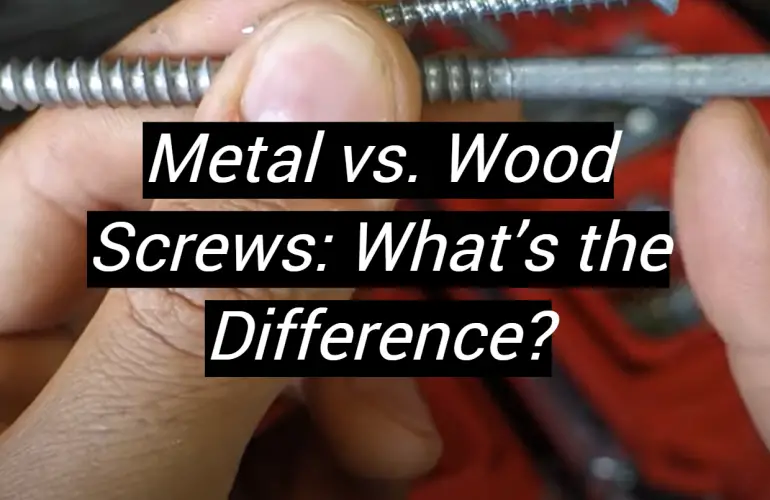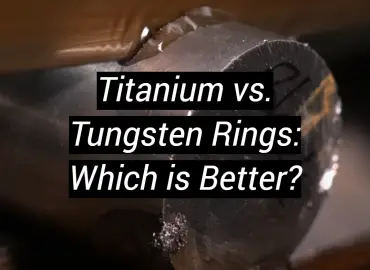There are many factors to consider when choosing the right screws for your project. Do you want metal or wood screws? What’s the difference? In this article, we will discuss the pros and cons of metal and wood screws, as well as provide helpful tips on how to choose the right screws for your specific application. Let’s get started!
What is a Metal Screw?
A metal screw is a fastener that is made of metal, typically steel or stainless steel.
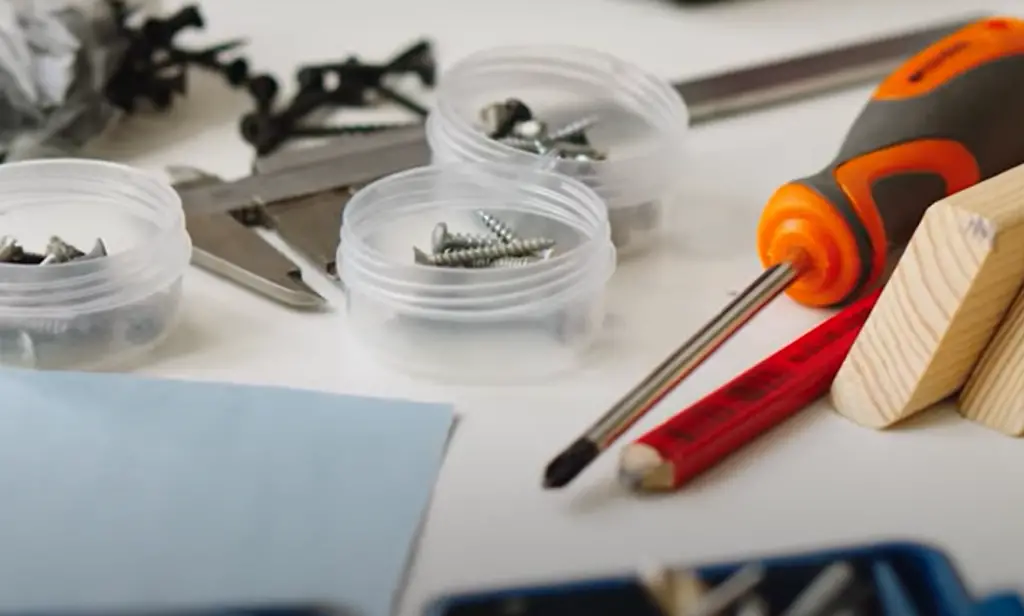
Metal screws are used in a variety of applications, including woodworking, plumbing, and electrical work. They are available in a variety of sizes and head styles to suit your needs.[1]
Types of Metal Screws
Machine Screws
Machine screws are one of the most common types of screws. They are used to fasten metal parts together and are available in a variety of sizes and thread pitches. Machine screws have a wide variety of head styles including round, flat, pan, and hex.
Cap Screws
Cap screws are similar to machine screws, but they have a higher load-bearing capacity. They are typically used to fasten heavy machinery together. Cap screws are available in a variety of sizes and thread pitches.
Lag Screws
Lag screws are large, heavy-duty screws that are used to secure wood or metal parts together. Lag screws have a square or hexagonal head that is designed to be driven with a wrench. Lag screws are available in a variety of sizes and thread pitches.
Sheet Metal Screws
Sheet metal screws are used to fasten metal parts together. They have a sharp point that allows them to penetrate through thick materials. Sheet metal screws are available in a variety of sizes and thread pitches.
What is a Sheet Metal Screw?
Screw Head
When choosing screws, it is important to know what type of screw head and drive type you need as well as the length needed for the job at hand. In this guide, we will discuss the different types of sheet metal screws so that you can make an informed decision when selecting fasteners for your next project.
These screws have a large, flat head with a Phillips or slotted drive recess. The threads on sheet metal screws are sharp and fine, which allows them to cut through the metal surface and create their own mating thread.[1]Drive Socket
There are two common drive types used for sheet metal screws, Phillips and slotted. Phillips drives have a cross-shaped recess that allows the driver to bite into the head of the screw and prevent slipping. Slotted drives have a linear-shaped recess that accepts a flat-blade driver.
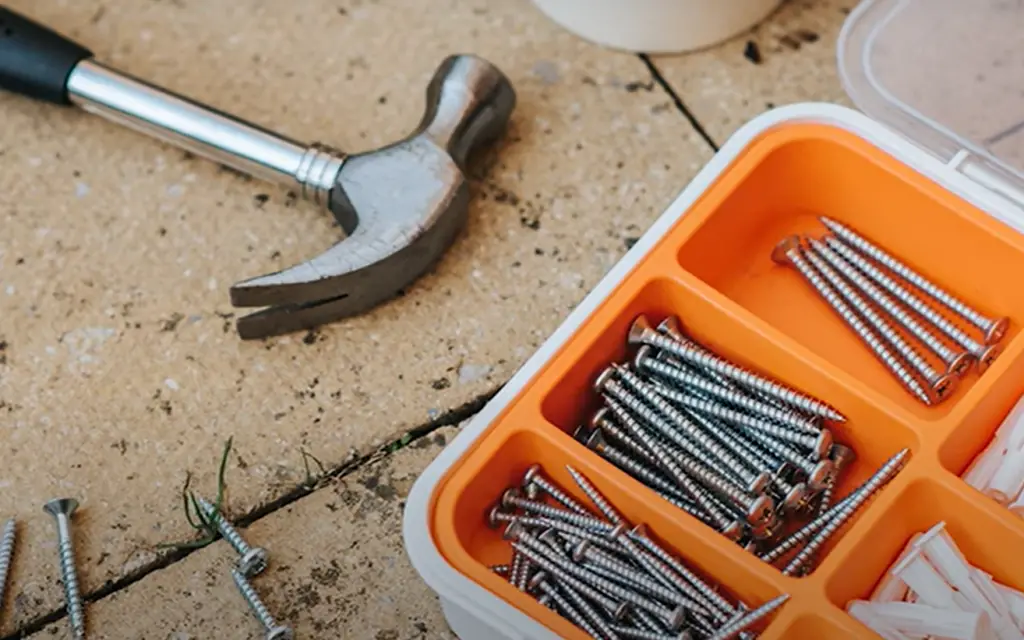
The size of the drive socket is also an important consideration when selecting sheet metal screws.
What is a Sheet Metal Screw Made of?
Sheet metal screws are made from a variety of materials, including carbon steel, stainless steel, and bronze. The material you select will depend on the application and the level of corrosion resistance required.
- Carbon steel screws are the most economical choice and are suitable for most applications. These screws are zinc plated to resist rust and corrosion.
- Stainless steel screws are more expensive than carbon steel screws but offer superior corrosion resistance. These screws are perfect for outdoor applications or any job where rust and corrosion are a concern.
- Bronze screws are the most expensive option but offer the best corrosion resistance. These screws are ideal for saltwater or other highly corrosive environments.
Metal Screw Features
- Metal screws are most commonly made from steel, which is an alloy of carbon and iron. Steel is harder than iron, so it can stand up to more wear and tear. It’s also rust-resistant, making it a good choice for outdoor projects.
- Another advantage of metal screws is that they’re easy to find in any hardware store. They come in a variety of sizes and threads, so you can find the perfect screw for your project.
- Metal screws are also very strong. They can handle a lot of weight and pressure without breaking. This makes them ideal for projects that require a lot of force, such as building a deck or attaching heavy furniture to a wall.
- However, metal screws have a few disadvantages. They’re more expensive than wood screws, and they’re not as easy to work with. They can also strip easily, so you need to be careful when driving them into hardwoods.[1]
Wood Screw Features
- Wood screws are made from a variety of materials, including brass, bronze, and stainless steel.
- They’re also available in a variety of sizes and threads. You can find the perfect screw for your project at any hardware store.
- Wood screws are less likely to strip than metal screws. This makes them easier to work with, especially if you’re working with hardwoods.
- Wood screws are also less likely to break under pressure. This makes them ideal for projects that require a lot of force, such as building a deck or attaching heavy furniture to a wall.
- However, wood screws have a few disadvantages. They’re more expensive than metal screws, and they’re not as strong. They can also strip easily, so you need to be careful when driving them into hardwoods.[1]
Self-Tapping vs. Self-Drilling Screws
When it comes to screws, there are a lot of different types to choose from. But for the purposes of this article, we’ll be focusing on two specific types: self-tapping screws and self-drilling screws.
So, what’s the difference between these two types of screws?
Self-tapping screws are designed to tap their own threads into a pre-drilled hole in wood or metal. Self-drilling screws, on the other hand, are designed to drill their own holes as they’re being driven into the material.
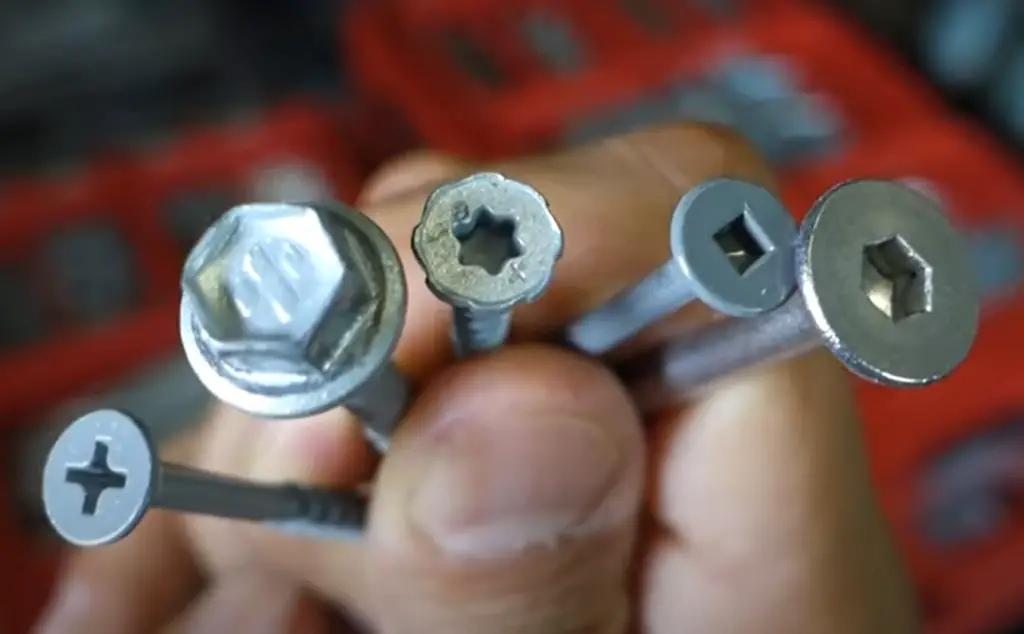
Self-tapping screws are generally going to be the better choice for most applications. They’re easier to use and less likely to cause damage to the material you’re screwing into.
Self-drilling screws should only be used in situations where a self-tapping screw can’t do the job. For example, if you’re trying to attach something to metal and there’s no pre-existing hole for the screw to tap into.[1]
What is a Wood Screw?
Thread & Shank
Wood screws have coarser threads than machine screws, which helps them bite into wood more effectively. They also have a tapered shank that allows them to be driven more easily into thick pieces of lumber.
Wood Screw Drive Types
There are several different types of drives for wood screws, the most common being Phillips and slotted. Phillips drives have a cross-shaped recess that allows you to insert a Phillips driver bit or screwdriver. Slotted drives have a linear-shaped recess that’s meant to be driven by a traditional flathead screwdriver.
Wood Screw Head
There are several different types of heads for wood screws, the most common being round, oval, and flat. Round heads have a domed top and are the preferred choice when you want your screw heads to be flush with or slightly below the surface of your workpiece. Oval heads have a slightly flattened top that sits slightly above the surface of your workpiece. Flat heads have a flat top that sits flush with the surface of your workpiece.
Other Wood Screws
There are also several other types of wood screws, such as drywall screws, deck screws, and lag screws. Drywall screws have fine threads and are designed for use with drywall or other thin materials.
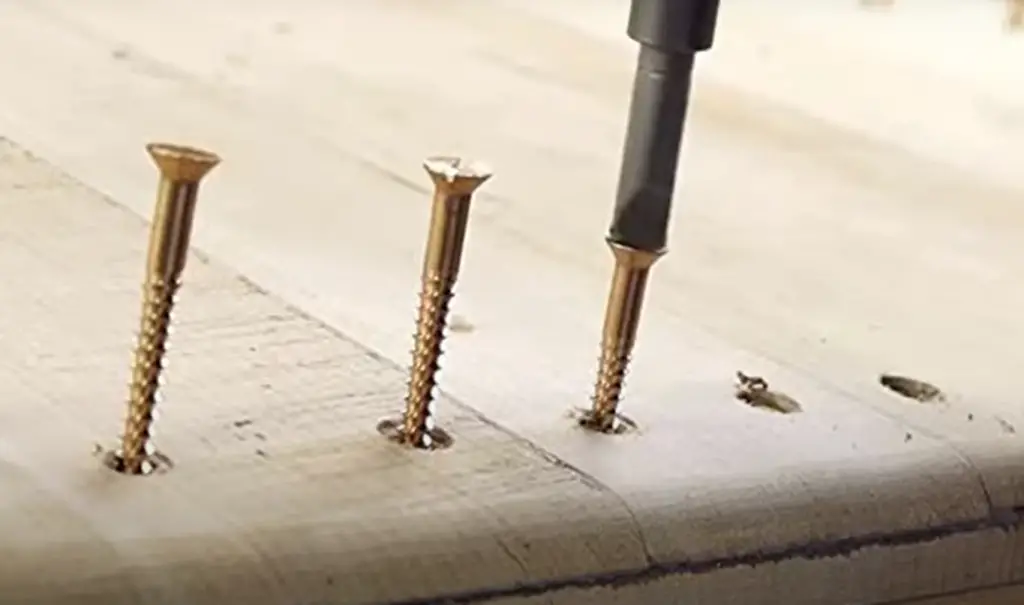
Deck screws have coarse threads and are meant for outdoor use in decks, fences, and other projects where they’ll be exposed to the elements. Lag screws have coarse threads and are used in heavy-duty projects like attaching beams to studs.
Wood Screw Features
- A wood screw features a pointed tip that allows it to penetrate easily into wood.
- The threads on a wood screw are coarse, which helps it grip the wood securely.
- Wood screws come in a variety of lengths and widths to accommodate different projects.
- A wood screw can be removed and reused if necessary.[3]
Uses of metal screws
Metal screws are most commonly used in construction projects where they are needed to fasten together materials like wood, metal, and plastic. They are also used in the manufacture of electronics and in the medical field.
Metal screws come in a variety of sizes and shapes to accommodate different projects.
Other types of metal screws include flathead screws, hex head screws, and machine screws.When choosing metal screws, it is important to consider the strength of the material they will be used to fasten together. Stainless steel screws are the strongest type of metal screw and are best suited for outdoor projects or projects that will be exposed to moisture. Zinc-plated screws are less strong than stainless steel screws but are still suitable for most indoor projects.[2]
Uses of wood screws
Wood screws are commonly used for fastening wood to wood. The most common use for wood screws is to attach two pieces of wood together, such as when building a piece of furniture or a wooden deck. Wood screws are also used for attaching metal hardware to wood, such as hinges and handles.
When choosing a wood screw, it is important to consider the following:
- The type of wood you will be using the screw with (softer woods require shorter screws, while harder woods can handle longer screws)
- The thickness of the wood (thicker boards require longer screws)
- The intended purpose of the screw (for example, if you need a screw that will bear a lot of weight, you will need a stronger screw)
- The length of the screw (shorter screws are easier to drive into wood, but longer screws have more holding power)[2]
Size Does Matter
The first thing to consider when choosing between metal and wood screws is size. Metal screws are generally smaller than wood screws, which gives them a big advantage in some applications.
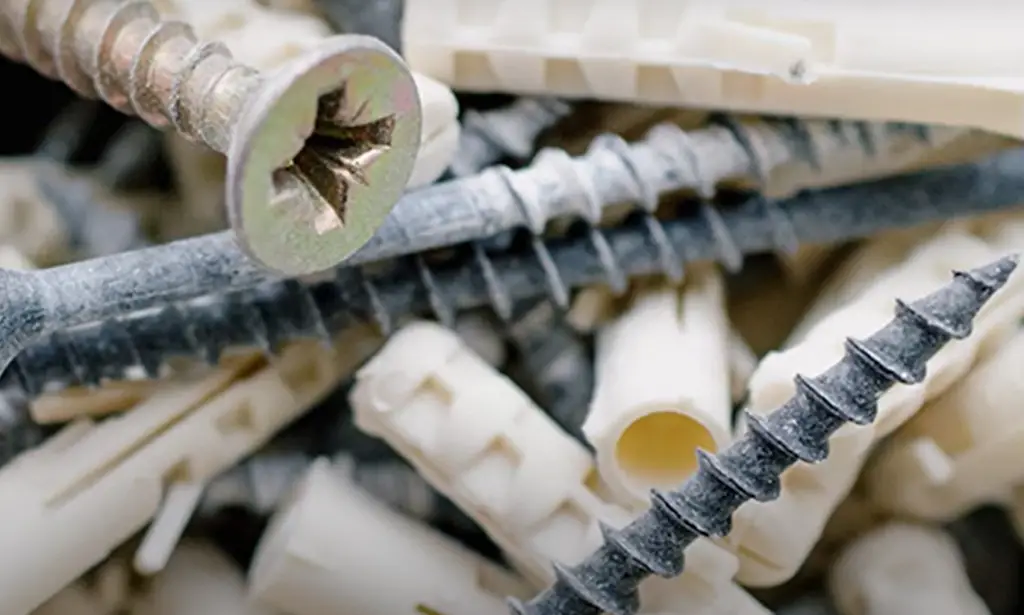
They can be used in thinner materials and tighter spaces without compromising strength or stability.[4]
FAQ
Is it OK to use metal screws in wood?
Yes, you can use metal screws in wood. However, it is important to choose the right type of screw for the job. For example, if you are using a metal screw in a piece of softwood, you will want to make sure that the screw is not too long or too thin, as this could cause the wood to split.
Can I use metal screws instead of wood screws?
It depends on the project. In general, metal screws are better for projects that require a lot of strength, such as building a deck or attaching two pieces of wood together. However, they can be more difficult to work with and may leave visible holes. For projects where aesthetics are important, such as building furniture, wood screws are usually the better choice.
Are metal screws stronger than wood screws?
Yes, metal screws are usually stronger than wood screws. This is because they are made from harder materials and have a more precise threading. However, this does not mean that metal screws are always the best choice. For example, if you are working with softwood, it is important to choose the right type of screw so that you do not split the wood.
Why don’t you use screws on framing?
There are a few reasons why screws are not typically used in framing. First, they can be more difficult to work with than nails. Second, they usually require pre-drilling, which can add time and effort to the project. Finally, screws can leave visible holes, which may not be desirable in a finished project.
Why do carpenters prefer screws over nails?
There are a few reasons why screws are preferred over nails by carpenters. First, they are easier to work with and require less effort to install. Second, they provide a stronger connection between two pieces of wood. Finally, screws are less likely to pop out over time, which can be a problem with nails.
Why do carpenters use nails instead of screws?
There are a few reasons why nails are used instead of screws by carpenters. First, they can be more difficult to work with and require more effort to install. Second, they provide a stronger connection between two pieces of wood. Finally, screws are less likely to pop out over time, which can be a problem with nails.
Is it OK to frame with screws?
Yes, you can frame with screws. However, it is important to choose the right type of screw for the job. For example, if you are using a metal screw in a piece of softwood, you will want to make sure that the screw is not too long or too thin, as this could cause the wood to split.
Useful Video: Which screw to use… wood and metal screws introduction
Conclusion
Now that you know the difference between metal and wood screws, it’s time to choose the right one for your project. If you need a screw that can handle a lot of weight or stress, then metal screws are the way to go. However, if you need a screw that will blend in with its surroundings, then wood screws are the better choice. Whichever type of screw you choose, make sure to use the right drill bit and drive tool so that your project turns out just the way you want it to.
Do you have any questions about choosing the right screw? Leave a comment below and let us know!
References:
- https://www.finepowertools.com/woodworking/metal-screw-vs-wood-screw/
- https://www.marshfasteners.com/the-difference-between-sheet-metal-screws-and-wood-screws/
- https://allpointsfasteners.com/blog/wood-screws-vs-metal-screws.html
- https://www.usmicroscrew.com/2018/11/13/wood-vs-metal-screws-what-is-the-best-choice-for-your-project/

